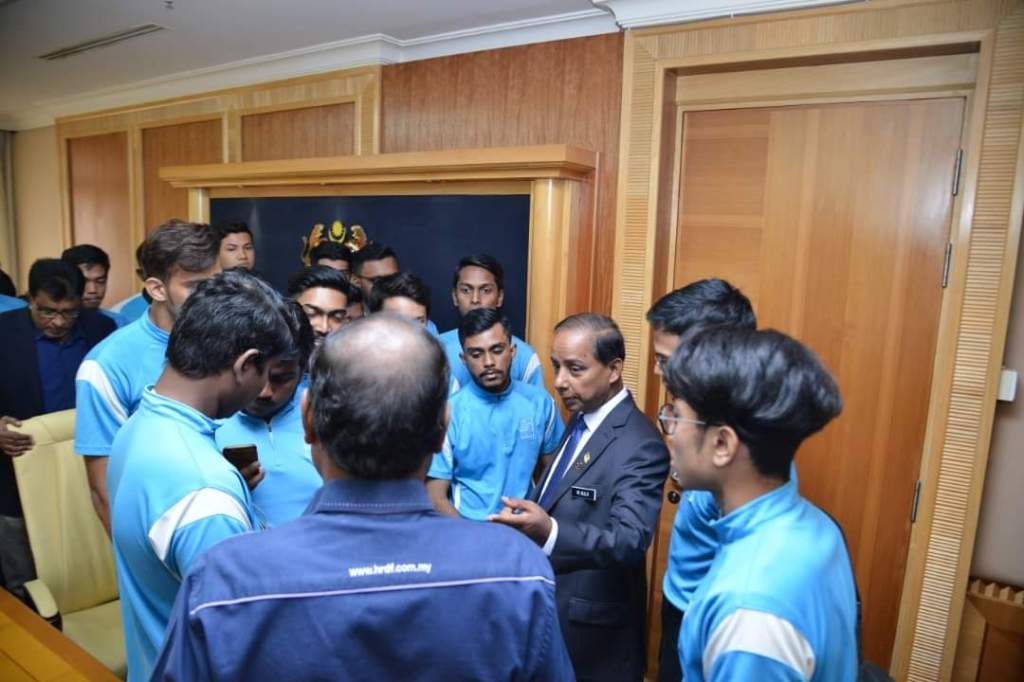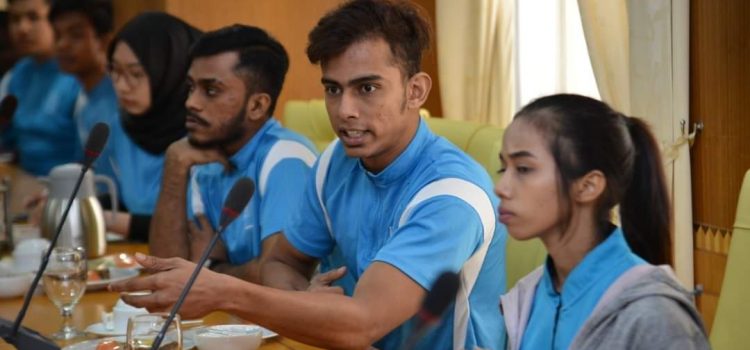By Arveent Kathirtchelvan
I had the express pleasure of working with the Allied Aeronautics Training Centre Students’ Union (AATCSU) from when it was only a concept in the minds of a few proactive, socially conscious students, until it was established properly and, now, it has grown to win in its struggle through negotiations between student leaders, the Ministry of Human Resources and the AATC management. This was my first experience in handling a social case with the Parti Sosialis Malaysia and I am grateful that I could learn the process from the capable hands of comrade Sharan Raj, a central committee member of the party.
Reflecting on the past few months, there are a few points that stand out to me with regards to how the party helps those in need and, more interestingly, how they help themselves. As socialists, the prevailing thought at the forefront of our consciousness is the empowerment of groups who are suppressed. However, those new to the process, as I am, are sometimes not really clear on what empowerment means. Seeing it unfold in front of my eyes taught me how it is supposed to look, and the mentality necessary for those trying to help these groups.
The AATCSU Experience
In the beginning of PSM’s involvement with what will eventually become the AATCSU, several AATC students approached PSM seeking assistance. The main issue was that the college management promised to arrange for PTPK loans to pay for the students’ fees. The students, most of whom are from a lower income bracket, relied on this guarantee to enrol as the interest rate and the payback instalment amount are low for these loans. Years on and 6 batches of student intakes later, the whole cohort had studied without paying a single sen, but the loans weren’t coming. The college management then asked for students to apply for Affin Bank Personal Loans with a near 8% interest rate. This was an unacceptable arrangement for the students and they began to look for a way out of it.
We saw that the students were interested in a holistic solution. There was no division based on race or religion, nor did the students look out only for their individual benefit. They considered themselves to be a united front, each equal to the other, and were willing to fight for what was promised to them. A preliminary organization structure was laid out, with the initial small group of students spreading out to talk to their classmates, batch by batch. Week by week, the number of students committed to organization grew. After a while, the leadership structure of the growing union solidified, from chairperson to secretary to committee members assigned to their respective batches.
Soon, the time came to call a town hall discussion. The first attempt was a failure. The number of students who came were not more than half of the entire cohort. For those who did, Sharan led a post-mortem that identified challenges in reaching out to the other students and how much work really needs to be done in explaining to them what the union represented. The students were resolved to go back to square one. More organizing and more ground work were undertaken. The committee more seriously focused on getting the attendance numbers up. A date was fixed for the next town hall.
When it came, as I pulled-up to the venue, the crowd was burgeoning. Already, the total number of students seemed to easily double that of the first town hall. There was a desk prepared with registers listing those who had agreed to attend, being ticked-off one-by-one as they came in. When the meeting started, the target of getting more than half of the entire AATC student body to attend was easily achieved. This group seemed clear on their intentions. They were there to stand as one to solve their problems together. The preliminary committee was pulled up in front of the attendees and were voted on. Some of the committee was replaced, new positions were added and the composition of the committee, in terms of race and gender, was made diverse.
Following this success, a letter was drafted to the management detailing the students’ demands. Amongst these were the preparation of the PTPK loans and discontinuation of the lack of engagement with students before decision-making on the part of the management. A meeting was requested by the student union with the management to begin negotiations on these matters. When the letter was hand-delivered, the management received it and asked for a few days to go through it before responding.
The following Monday, both the chairperson and secretary of the union were dismissed from AATC. The rest of the union were informed of this that morning. Afternoon came and over 90 students went to the ground to protest this decision. They occupied their training centre and demanded for their fellow students to be reinstated. The unity shown by the union members was shocking and refreshing. Weeks of talking about each other as part of the same class struggle was realized in an instant when the might of the management was exerted. It was awe-inspiring.
More so when some of them were taken to the Kelana Jaya Police Station, the rest of the students gathered in front and waited for hours until they were released. Students of all races coming together with the sole intention of getting their own released. Even when there were certain outside forces trying to inject a racial perspective into them at that time, the students stayed firm. Close to 10 pm, the detained students, alongside Sharan, were released. The students rejoiced.

Two days later, a meeting was arranged between the students, AATC management and the Ministry of Human Resources. Minister M. Kulasegaran acted in favour of the students and assisted them to achieve a mutually beneficial outcome. The students asked for the reinstatement of their dismissed chairperson and secretary, the arrangement of PTPK loans for them and the re-enrollment of fellow students who had earlier left AATC due to the lack of a good financing option. All three demands were agreed to. The student union had won.
An Analysis
So, to review, how do we analyse the experience of this union? Oftentimes, we judge society to be filled with racially-biased individuals who can never be united. However, this togetherness is clear in the AATC Students’ Union which is multiracial but moves as one. We need to understand that the type of organization is key. What I mean by this is, they union was organized around a class struggle. There was an oppressive class in the management and an oppressed class in the students. This was understood clearly. Race was nowhere near the foundations of this union.
There is also the perception that students and other suppressed social classes, like lorry drivers and plantation workers, are not capable of organizing themselves. Our experience with the AATCSU proves this wrong. Most of the work was done by the students themselves, from explaining their stance to other students, ensuring the racial divide does not set in until getting students to come to the ground to openly protest.
This was no radicalization. This was realization of the innate talents of the students themselves. They were determined and worked hard to prepare themselves to solve their own problems. This is empowerment. You don’t have to give hand-outs, just a conducive environment for affected individuals to organize and find amicable solutions to their issues. This approach is clear in PSM’s other work as well. From unfairly retrenched workers to plantation workers being evicted from their houses, PSM’s approach in class-based organization isn’t only effective but is sustainable as there is true ownership of those being organized themselves in the process.
As we near Merdeka, many quarters throughout the nation are calling it the least joyful of all. Political parties and NGOs instigate racial sentiments, the people are beginning to tire of the deep cracks within our society. Yet, in AATCSU, we can see hope burning brightly. Their model uplifted their community effectively, their unity forged far from the deep clutches of racial sentiments. Proof, again, that through a class-based approach, not only can we stand against oppressors and achieve what we seek but we can do it as a united front with no division between us. AATCSU has taught all of us a lesson in these trying times. Will we care to listen? Happy Merdeka, Malaysia.
Arveent Kathirtchelvan is a committee member of Parti Sosialis Malaysia, Youth Wing















